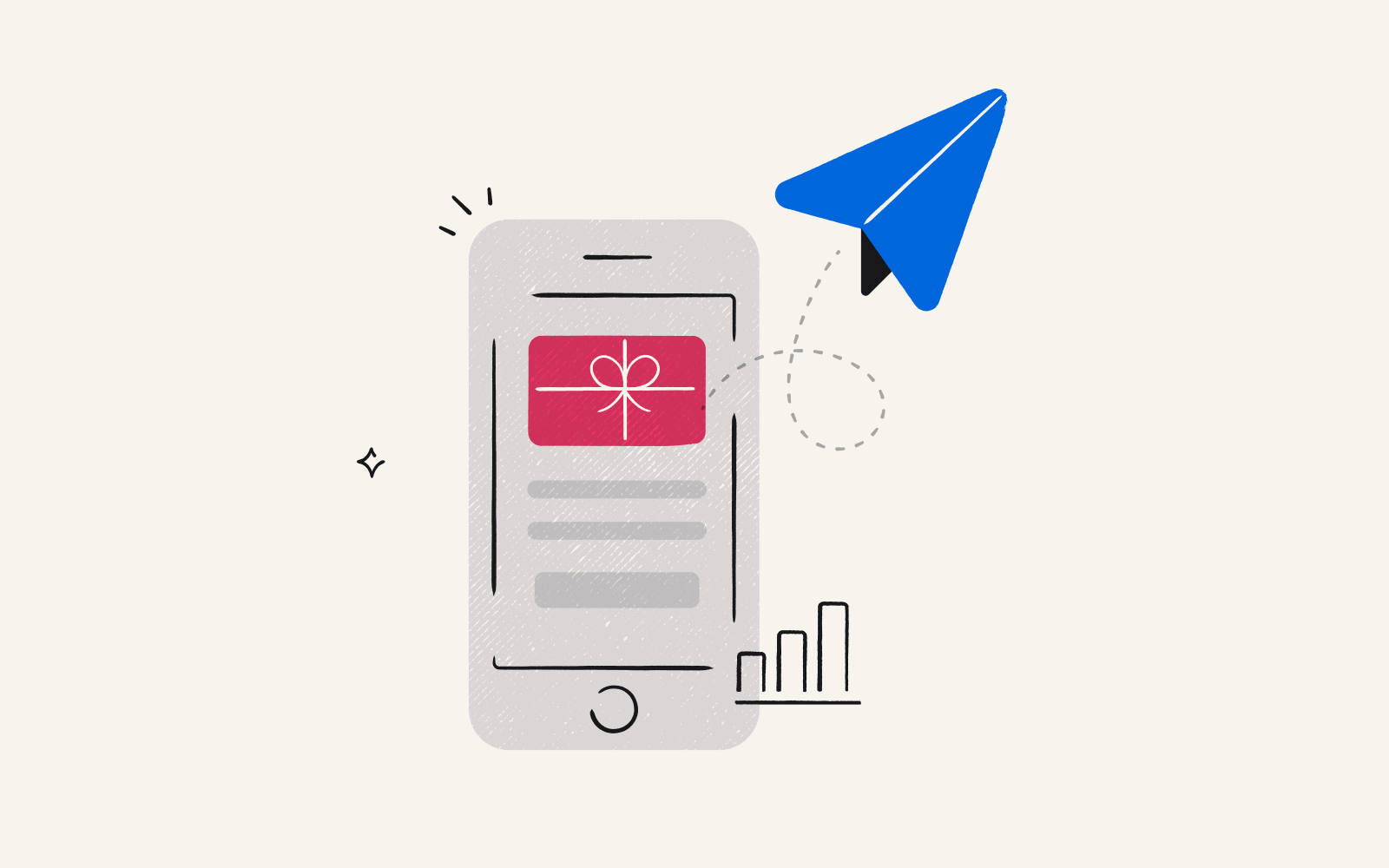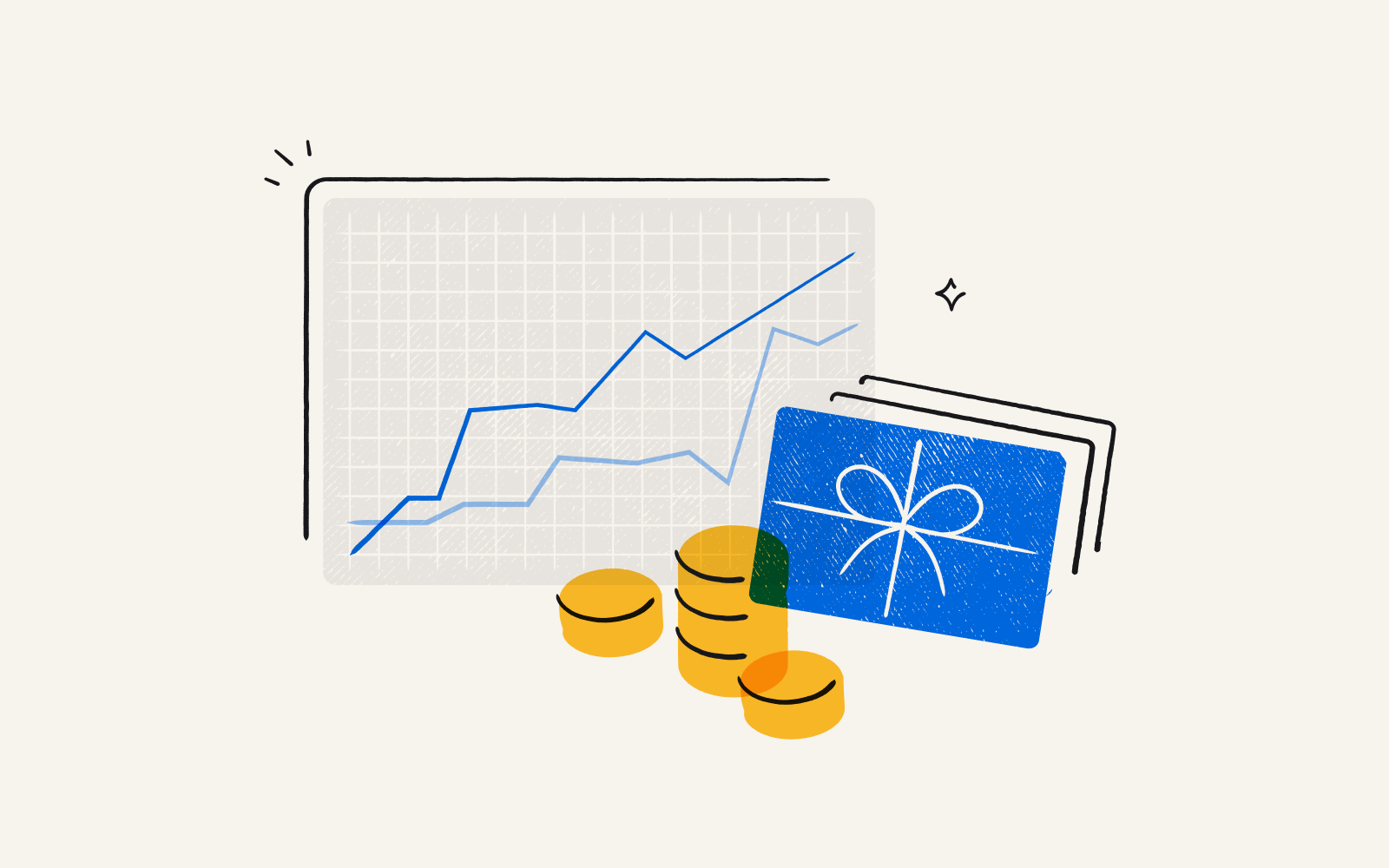Should you use gift card incentives to book sales demos? We tested it.
By Amy Rigby|5 min read|Updated May 10, 2024
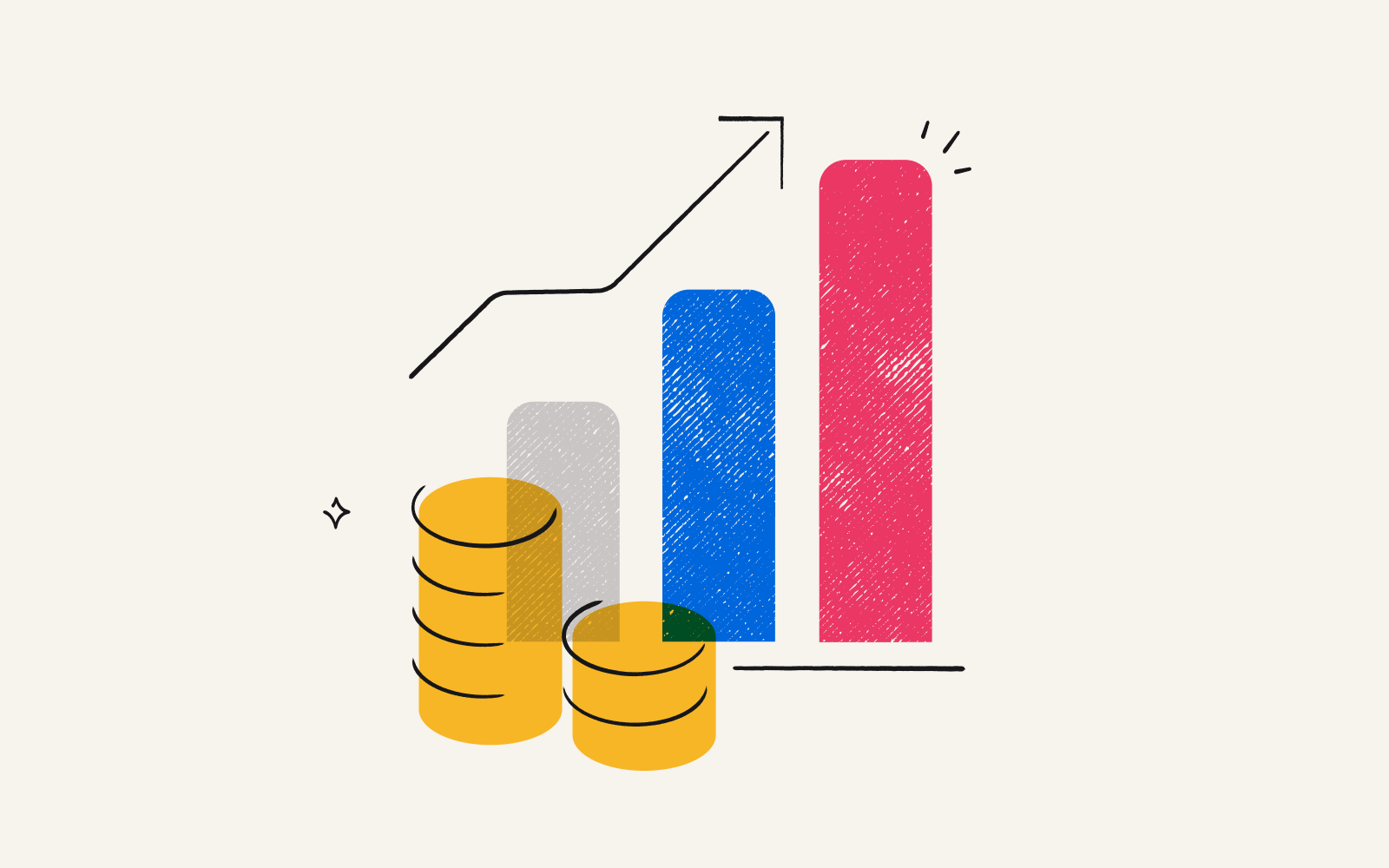
We won't bury the lede: offering gift cards to prospects who book sales demos on LinkedIn improved our lead quality, decreased the cost per lead by 81%, and more than doubled response rates. Read on to find out how.
When it comes to incentivizing sales demos, marketers have a lot of opinions (just search “gift cards for demos” on LinkedIn to see what we mean). But what they don’t have a lot of is data to back up their beliefs. (And yes, we have scoured the internet for case studies and research on whether demo incentives are effective.)
Maybe you've seen it before: An ad pops up in your newsfeed offering you a $50 gift card if you book a sales demo with a company. This, of course, raises a few questions, like, "If you have to pay someone to take your demo, what does that mean about your product?” and ��“What if you attract low-quality leads who just want free money?”
And the biggest question of all: "Do demo incentives actually work?"
We’re not ones for speculation, so we set out to settle the debate by running an experiment with the help of our sales team. Here’s how we did it and what we found.
How companies use gift card incentives to book more sales demos
To set the stage for this experiment, let’s first clarify what we mean by “demo incentives.” These are rewards, typically gift cards, that companies offer to prospects simply for participating in the call, even if they don’t end up buying.
Take marketing software provider Metadata, for instance. The company ran LinkedIn Sponsored Messaging ads that offered a $100 DoorDash gift card to people who signed up for a software demo. The results? Metadata delivered 230% more demos in one month with 60% less spend.
The experiment: Using gift card incentives in LinkedIn outreach
We wanted to investigate whether offering gift cards to prospects would increase the likelihood of them booking a sales demo with us. As a software platform that makes it easy for companies to send digital rewards at scale, we wanted to ensure we targeted people at companies that send a lot of incentives.
Here are the key details of our experiment:
Target audience: Marketers
Platform: LinkedIn Sponsored Messaging ads
Control group: We did not offer this group any incentives for booking the sales demo.
Experimental groups: We offered these groups varying amounts of gift card incentives:
$50
$100
$105
To test the effectiveness of gift card incentives on booking demos, we ran Sponsored Messaging ads on LinkedIn. We tailored the copy depending on the vertical and tested different amounts ($50, $100, and $105). Subjects in our experimental groups received the following message:
When recipients clicked “yes,” we sent the following
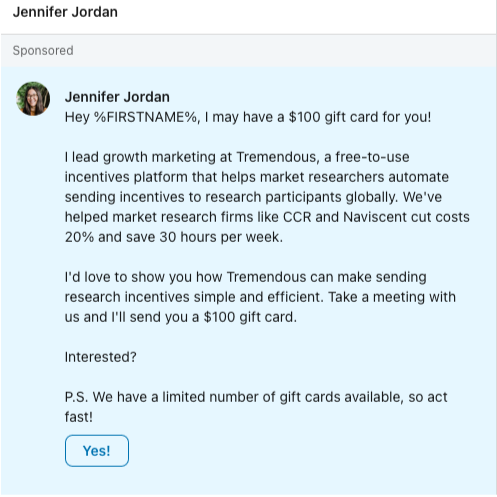
When recipients clicked “yes,” we sent the following question to qualify the leads:
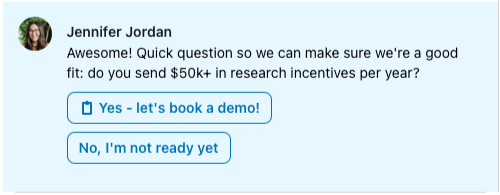
Recipients could only book a demo if they indicated that they send more than $50,000 a year in incentives:

Even with ad targeting and a qualifying question, some spam or low-quality leads can still slip through. To mitigate this, we put LinkedIn leads through our vetting process to ensure they fit our ideal customer profile. If they passed, we added them to our HubSpot CRM to track incentivized leads and ensure we sent them the right gift card amount.
After the lead attended the demo, one of our account executives sent them their gift card through Tremendous and marked in HubSpot that it was sent. The only reason we didn’t send a gift card was if the lead was a no-show.
The results: Do gift card incentives actually work? What our data showed
In short, any incentive performed better than no incentive at all. Compared to our control group, incentivized leads had:
Higher form submission rates
Better LinkedIn-to-CRM conversion rates
Lower cost per lead
We split the results below into two groups:
LinkedIn leads are those who submitted the form on LinkedIn to book a demo.
CRM leads are the LinkedIn leads who went on to pass our vetting process to disqualify low-quality leads.
For LinkedIn leads, any incentive amount ($50, $100, and $105) boosted LinkedIn form submissions by an average of 118% and cut our cost per lead by 53% (counting only the ad spend).
Even including the cost of the gift cards themselves, the cost per lead for the “any incentive” group was $332—still 38% lower than the no incentive group.
Overall, offering a gift card made prospects more than twice as likely to submit the form on LinkedIn. Interestingly, of all the incentive amounts, $50 boosted form submissions the most: by 145%.
When we get to the CRM leads, the impact is even greater, as is the quality of leads. When we offered any incentive amount, the LinkedIn-to-CRM conversion rate increased by an average of 236%, and the cost per CRM lead fell by 81%.
So, by offering prospects gift cards, we were able to more than triple the conversion rate and acquire higher quality leads at a lower cost versus offering no incentive at all.
So, how much should you offer as an incentive?
Based on our experiments, the amount doesn’t really matter. Offering any incentive markedly improved our response rates and lead quality.
Our $50 incentive did perform slightly better than our $105 offer when it comes to increasing the chances that someone will submit a LinkedIn form. However, after the vetting process, the $105 offer had the greatest impact on LinkedIn-to-CRM conversion rates.
The lesson is clear: Offering something is much better than offering nothing.
Conclusion: How to integrate incentives into your lead-gen strategy
We can hear it now: “If you have to pay prospects to take your demo, your software isn’t very good!” We disagree.
As you can see from our results, offering a cash incentive in exchange for our target audience’s valuable time boosted our lead quality. That meant that these weren’t people who were just “in it for the gift card.”
Rather, these were our ideal customers who, based on our targeting, already needed our solution. The gift card was just the nudge they needed to feel valued. It made setting aside time to sit through a demo that much more worthwhile and was an added benefit to finding a payouts and rewards platform that was actually easy to use.
While we won’t claim to settle the “Do demo incentives work?” debate once and for all, here’s what we do know:
For us, demo incentives improved response rates and conversions. Offering gift cards to prospects drastically increased form submission rates on LinkedIn and LinkedIn-to-CRM conversion rates.
The quality of leads actually improved with incentives. The significant reduction in the cost per CRM lead and the increase in the LinkedIn-to-CRM conversion rate support this.
Incentives lowered acquisition costs, too. Even after accounting for the cost of the incentives themselves, offering a gift card cut the cost per LinkedIn lead by more than a third (from $536 to $332).
Targeting and qualification really matter in this kind of B2B marketing play. Of course, we were very careful with targeting, as you should be any time you're offering a participation incentive. Because leads are getting rewarded merely for participating, it's easy to attract people who will sit through a demo just to get money.
We mitigated this risk in two major ways:
1. We used specific targeting in the LinkedIn ad dashboard.
2. We further qualified the LinkedIn leads through our vetting process.
In the end, this demo incentive experiment was so successful that we continue to run these LinkedIn campaigns.
If you'd like to incentivize your demos with gift cards, too, we've got you covered. Sign up for a free Tremendous account to start sending rewards, or take a demo with us to learn how we simplify incentive payouts.
Published May 10, 2024
Updated May 10, 2024

